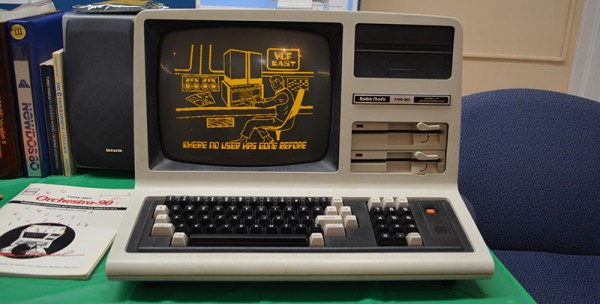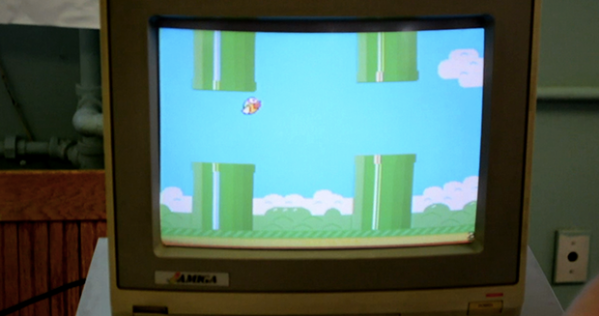Where did you buy the parts for your first electronic project? That’s a question likely to prompt a misty-eyed orgy of reminiscences from many Hackaday readers, if ever we have heard one. The chances are that if you are from North America or substantial parts of the English-speaking world, you bought them from a store that was part of the Radio Shack empire. These modestly sized stores in your local mall or shopping centre carried a unique mix of consumer electronics, CB radio, computers, and electronic components, and particularly in the days before the World Wide Web were one of very few places in which an experimenter could buy such parts over the counter.
Sadly for fans of retail electronic component shopping, the company behind the Radio Shack stores faltered in the face of its new online competition over later years of the last decade, finally reaching bankruptcy in 2015. Gone are all but a few independently owned stores, and the brand survives as an online electronics retailer.
The glory days of Radio Shack may be long gone, but its remaining parts are still capable of turning up a few surprises. As part of the company’s archives they had retained a huge trove of Radio Shack products and memorabilia, and these have been put up for sale in an online auction.
There is such a range if items for sale that if you are like us you will probably find yourself browsing the listings for quite a while. Some of it is the paraphernalia of a corporate head-office, such as framed artwork, corporate logos, or strangely, portraits of [George W. Bush], but the bulk of the collection will be of more interest. There are catalogues galore from much of the company’s history, items from many of its promotions over the years including its ventures into sporting sponsorship, and numerous examples of Radio Shack products. You will find most of the computers, including a significant number of TRS-80s and accessories, tube-based radios and equipment from the 1950s, as well as cardboard boxes stuffed with more recent Realistic-branded items. There are even a few retail technology dead ends to be found, such as a box of :CueCat barcode readers that they evidently couldn’t give away back in the dotcom boom.
If you are interested in any of the Radio Shack lots, you have until the 3rd of July to snap up your personal piece of retail electronic history. Meanwhile if you are interested in the events that led to this moment, you can read our coverage of the retail chain’s demise.
Thanks [Mark Scott] for the tip.




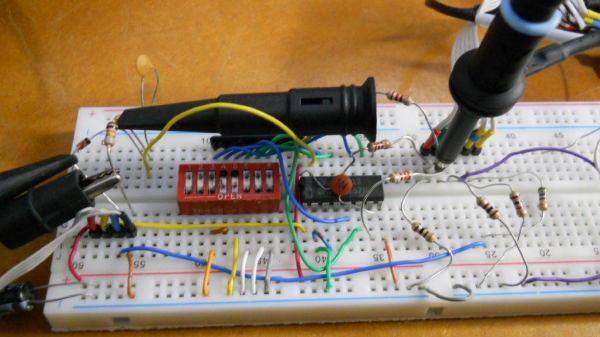
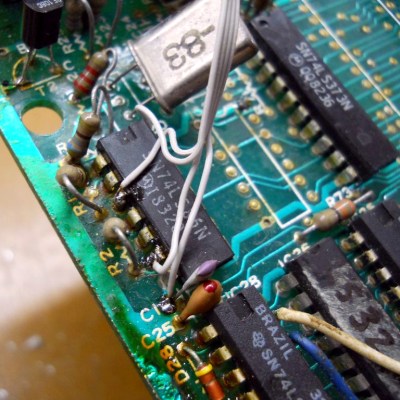 Before he could do any of this, he first had to debug and fix the TK-85 which seemed to be having several age related issues. After swapping out several deteriorating IC sockets, he was able to get it running. He soldered wires directly to one of the logic chips that had the video and sync signals present on them, along with the +5V and GND connections and hooked them up to a breadboard. He then tested his circuit consisting of the TTL multiplexer, DIP switches and resistors. This worked, but not as expected, and after some digging around, he deduced that it was due to the lack of the back porch in the video signal. From Wikipedia, “The back porch is the portion of each scan line between the end (rising edge) of the horizontal sync pulse and the start of active video. It is used to restore the black level (300 mV.) reference in analog video. In signal processing terms, it compensates for the fall time and settling time following the sync pulse.”
Before he could do any of this, he first had to debug and fix the TK-85 which seemed to be having several age related issues. After swapping out several deteriorating IC sockets, he was able to get it running. He soldered wires directly to one of the logic chips that had the video and sync signals present on them, along with the +5V and GND connections and hooked them up to a breadboard. He then tested his circuit consisting of the TTL multiplexer, DIP switches and resistors. This worked, but not as expected, and after some digging around, he deduced that it was due to the lack of the back porch in the video signal. From Wikipedia, “The back porch is the portion of each scan line between the end (rising edge) of the horizontal sync pulse and the start of active video. It is used to restore the black level (300 mV.) reference in analog video. In signal processing terms, it compensates for the fall time and settling time following the sync pulse.”
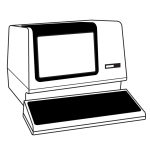 The Hackaday Retro Edition is our celebration of old computers doing something modern, in most cases loading
The Hackaday Retro Edition is our celebration of old computers doing something modern, in most cases loading 